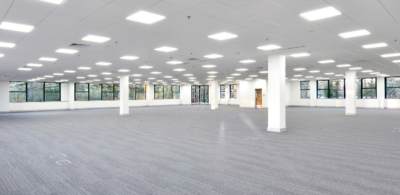Today’s most innovative and successful companies expect a very different office environment than most traditional buildings offer. Many older Class B and Class C spaces lack the open floorplans, modern finishes and high-tech capabilities that Class A buildings provide. This can present a challenge when leasing and selling out-of-date office properties, even in a healthy market.
In my own market of Southwest Florida, there are many office buildings that are either in need of significant improvements or that have been deemed functionally obsolete. Many of these buildings are vacant, while those that are occupied yield lower-than-average rents. These factors skew the perceived performance of the market, bringing down its value in the eyes of successful property managers, developers and investors.
However, I’ve noticed a recent trend in Southwest Florida that appears to offer a solution to allow the market to grow. The answer lies in the “end-user” buyer — a company that will singularly own and occupy a property for its own use.
UNDERSTANDING THE END-USER BUYER
To a developer or investor, a building in need of improvements might seem discouraging due to high vacancy rates and low rents. But to the right end-user looking to accommodate growth or relocation needs, such a property can be an affordable and convenient alternative to developing a new building.
In many cases, these buyers may be entities such as medical facilities, government agencies or large corporations that are more likely to own than rent. While the buyer may still need to make an investment to improve the property, the costs can be favorable compared to constructing a new building.
Recent end-user acquisitions in the Fort Myers market have included financial institutions and health care providers taking advantage of the market’s situation to acquire high-quality, low-cost office space for their employees and business partners. This trend is also occurring in other markets throughout Florida, such as the Orlando area.
END-USER BUYERS CAN CREATE A TRUE “WIN-WIN” SITUATION
For commercial office users looking to expand their spaces, the decision to buy and renovate an older building can not only be more economical, but it can also be more convenient in time-sensitive situations than building from the ground up. And considering that most mid-sized markets lack undeveloped land — especially land that is centrally located and primed for development — purchasing existing office space gives end-users a coveted opportunity to own property in a downtown/urban core location.
For real estate professionals, finding the right end-user buyer is the last piece in the puzzle after you’ve identified your property’s individual needs and appeal. To connect with these types of companies, it’s important to engage in the local business community, whether through a chamber of commerce, local economic development council or other business organization.
It’s also helpful to know a good architect and contractor who can work with a potential buyer right away to figure out possibilities for renovating and updating the property. Many contractors are willing to work with potential buyers before a deal is made as part of their business development.
All in all, the end-user situation can be a win-win. The buyers get the space they need without making a significant investment in a new building and the market benefits from any improvements the end-user makes to the property that increase its value and functionality. The market is also strengthened by fewer vacancies and fewer properties with low rents. And that’s an outcome that can have far-reaching benefits.
Jim Garinger is Senior Managing Director for Colliers International Southwest Florida, based in Fort Myers. He has more than 30 years of experience as a business development professional, giving him a keen ability to understand the needs and goals of businesses as they relate to commercial real estate.

 Colliers Insights Team
Colliers Insights Team
 Aaron Jodka
Aaron Jodka
 Amber Merrigan
Amber Merrigan
 Andrew Steele
Andrew Steele